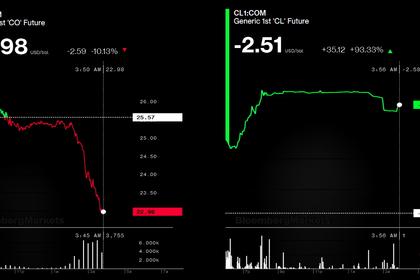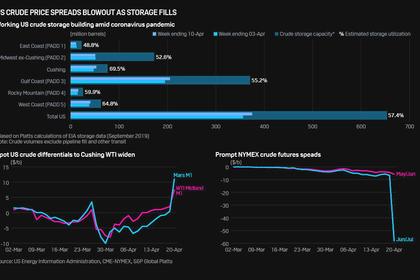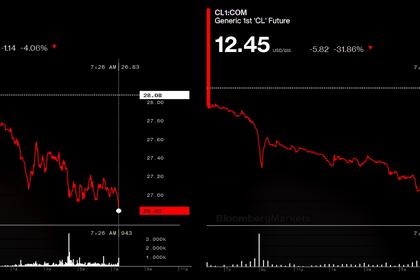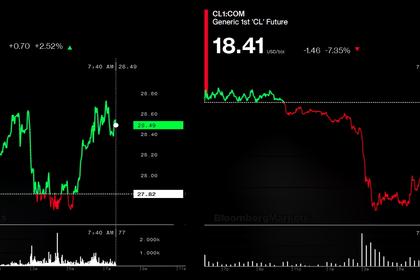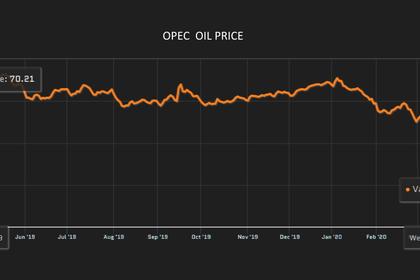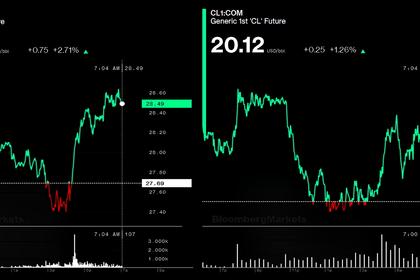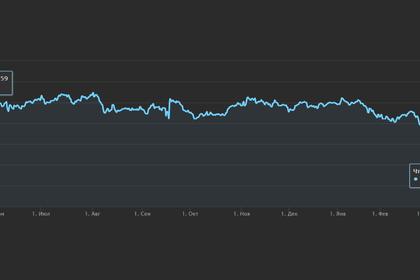ОПЕК+ РОССИЯ: ВСЕ ВОЗМОЖНОСТИ

МИНЭНЕРГО РОССИИ - ЗАЯВЛЕНИЕ АЛЕКСАНДРА НОВАКА ОТНОСИТЕЛЬНО СИТУАЦИИ НА МИРОВОМ НЕФТЯНОМ РЫНКЕ
Москва, 21 апреля. - Нефтяной рынок сейчас находится в крайне волатильном состоянии из-за резкого падения спроса, связанного с мерами по противодействию распространению коронавируса, с постепенным затовариванием хранилищ и неопределенностью сроков восстановления мировой экономики. Давление на рынок будет сохраняться до начала действия соглашения ОПЕК+ в мае, снижения добычи странами вне соглашения и облегчения ограничительных мер.
Вчерашний коллапс нефтяных котировок американской марки WTI произошел в связи с распродажей фьючерса с поставкой в мае в момент окончания торгов по бумаге (после 20-го апреля майский фьючерс не торгуется на бирже), отсутствием спроса на дополнительные поставки нефти в мае и с вероятностью затоваривания хранилищ. Это вызвало спекулятивное падение финансового инструмента до отрицательных значений.
Но не стоит драматизировать ситуацию. Важно понимать, что это бумажный рынок, то есть торговля производными финансовыми инструментами, а не физической нефтью. Котировки июньского фьючерса на Brent и WTI существенно выше, хотя тоже подвергнуты волатильности из-за общего негативного настроения на рынке.
Страны ОПЕК+ внимательно следят за ситуацией и имеют, в случае необходимости, все возможности для реагирования.
-----
ОПЕК+ РОССИЯ: ВСЕ ВОЗМОЖНОСТИ

REUTERS - APRIL 21, 2020 - U.S. oil prices hobbled back into positive territory on Tuesday after sinking below $0 for the first time ever, but international benchmark Brent dipped as the global coronavirus crisis severely reduces demand for crude.
U.S. West Texas Intermediate (WTI) crude for May delivery CLc1 was up $38.99 in thin trade at $1.36 a barrel by 0622 GMT after settling down at a discount of $37.63 a barrel in the previous session.
The May contract expires on Tuesday and the more-active June contract CLc2 rose 94 cents, or 4.6%, to $21.37 a barrel.
Global benchmark Brent crude for June delivery LCo1 was down 48 cents, or 1.9%, at $25.09 per barrel.
"Demand destruction from COVID-19 will see a slower than expected reopening of the U.S. economy," said Edward Moya, senior market analyst at broker OANDA, predicting a weak period for oil prices. "The WTI crude June contract was able to hold the $20 a barrel level and is seeing a modest gain following the painful rollover of the May contract."
Oil prices have skidded as travel restrictions and lockdowns to contain the spread of the coronavirus curbed global fuel use, with demand down 30% worldwide. That has resulted in growing crude stockpiles with storage space becoming harder to find.
The main U.S. storage hub in Cushing, Oklahoma, the delivery point for the U.S. West Texas Intermediate (WTI) contract, is now expected to be full within a matter of weeks.
Following the collapse in oil prices, U.S. President Donald Trump said on Monday that his administration was considering halting Saudi crude oil imports as a way to help the U.S. drilling industry.
"Today it's pretty clear that a major issue in the market is a glut in the United States and lack of storage capacity," said Michael McCarthy, chief market strategist, CMC Markets in Sydney.
Faced with the situation, the Organization of the Petroleum Exporting Countries (OPEC) and its allies including Russia, a grouping known as OPEC+, have agreed to cut output by 9.7 million barrels per day (bpd). But that will not take place before May, and the size of the cut is not viewed as big enough to restore market balance.
Supply and inventories are expected to tighten in the second half of the year, while "severe storage distress is likely to drive wild price realizations," in the next 4-6 weeks, Citi Research said in a note.
Meanwhile, U.S. crude inventories were expected to rise by about 16.1 million barrels in the week to April 17 after posting the biggest one-week build in history, according to five analysts polled by Reuters. Analysts expected gasoline stocks to rise by 3.7 million barrels last week.
The American Petroleum Institute is set to release its data at 4:30 p.m. (2030 GMT) on Tuesday, and the weekly report by the U.S. Energy Information Administration is due at 10:30 a.m. on Wednesday.
-----


